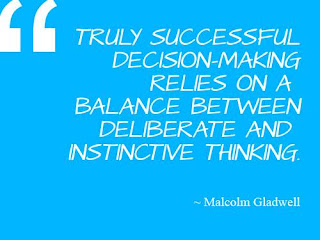Decision-making is a key skill in the workplace, and is particularly important if you want to be an effective leader.
Whether you're deciding which person to hire, which supplier to use, or which strategy to pursue, the ability to make a good decision with available information is vital. Each decision presents its own challenges, and we all have different ways of approaching problems.
You need a systematic approach to decision-making so that, no matter what type of decision you have to make, you can take decisions with confidence.
If you're aware of these six basic elements and improve the way you structure them, this will help you develop a better overall decision-making system. Let's look at the six elements individually.
Establishing a Positive Decision-Making Environment
If you've ever been in a meeting where people seem to be discussing different issues, then you've seen what happens when the decision-making environment hasn't been established. It's so important for everyone to understand the issue before preparing to make a decision. This includes agreeing on an objective, making sure the right issue is being discussed, and agreeing on a process to move the decision forward.
You also must address key interpersonal considerations at the very beginning. Have you included all the stakeholders? And do the people involved in the decision agree to respect one another and engage in an open and honest discussion? After all, if only the strongest opinions are heard, you risk not considering some of the best solutions available.
Generating Potential Solutions
Another important part of a good decision process is generating as many good alternatives as sensibly possible to consider. If you simply adopt the first solution you encounter, then you're probably missing a great many even better alternatives.
Evaluating Alternatives
The stage of exploring alternatives is often the most time-consuming part of the decision-making process. This stage sometimes takes so long that a decision is never made! To make this step efficient, be clear about the factors you want to include in your analysis. There are three key factors to consider here Risk, Consequences and Feasibility.
Deciding
Making the decision itself can be exciting and stressful. To help you deal with these emotions as objectively as possible, use a structured approached to the decision. This means taking a look at what's most important in a good decision.
Take the time to think ahead and determine exactly what will make the decision “right.” This will significantly improve your decision accuracy.
Checking the Decision
Remember that some things about a decision are not objective. The decision has to make sense on an intuitive, instinctive level as well. Check the alternative you've chosen for validity and "making sense."
If the decision is a significant one, it's also worth auditing it to make sure that your assumptions are correct, and that the logical structure you've used to make the decision is sound.
Communicating and Implementing
The last stage in the decision-making process involves communicating your choice and preparing to implement it. You can try to force your decision on others by demanding their acceptance. Or you can gain their acceptance by explaining how and why you reached your decision. For most decisions – particularly those that need participant buy-in before implementation – it's more effective to gather support by explaining your decision.
Have a plan for implementing your decision. People usually respond positively to a clear plan – one that tells them what to expect and what they need to do.
“It is in your
moments of decision that your destiny is shaped”

0 comments:
Post a Comment